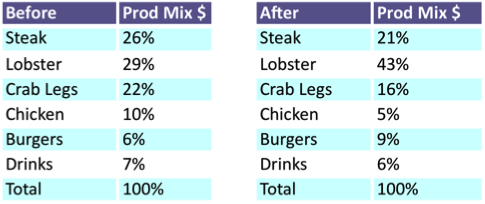![]()
Not everything that can be counted counts, and not everything that counts can be counted.
- Albert Einstein, Renowned Physicist
So Much Data to Manage
Restaurants generate a lot of information. Think about it. On a daily basis you’re collecting every item ordered on every guest check, every punch in/out of every employee, every receipt of materials, every entry in the log for deposits, etc. It’s a lot to process to gauge restaurant profitability! So how do you manage all that information? One way is to summarize the information across 5 restaurant reports: Daily Sales, Product Mix, Theoretical Food Cost, Labor Actual vs Schedule, Daily Cash. But when you summarize data you run the risk of losing many specifics and the granularity of the data.
The summarization, or aggregation, of restaurant data eliminates the ability to spot irregularities in the detail, thereby not letting you analyze your actual restaurant performance. You can easily make a false conclusion based on summarized data.
The Need to Examine More
The level of detail examined determines the irregularities you can find. Summarized data hides many irregularities. Thresholds of acceptable restaurant performance should be expressed at the most granular level. Examining data at the right level of detail is critical. You have to look at the percentages versus the base values. This tends to lead to examining more data.
Promo Analysis & Digging Deeper
Assume you run a promotion on your Burgers. The before and after product mix reports tell you that you sold more burgers as a percent of sales. Was the promotion successful? The right answer is that you don’t know, based on Product Mix alone. If you include the quantity sold in your analysis you get closer to an answer. You can see that quantity sold stayed the same, but there were shifts between the items. Was the promotion successful? You still don’t know.


What if you uncovered that total sales were higher during the promotion than before? Was the promotion successful? You still don’t know for sure. The problem is that product mix can’t tell you what caused the shift in demand patterns. You need to examine the details of each check to know if the promotion had anything to do with the shift in mix.
A Market Basket analysis will reveal if the promotion was a success. The analysis examines all the items sold with Burgers on the same checks. This reveals a more accurate cause and effect.
In this particular case the evidence seems to indicate that the promo was successful, but the market basket shows the total dollar amount in conjunction with burgers went down. It's only because the lobster sales went up that your total amount went up. But the increase in lobster sales was completely unrelated and had nothing to do with the burger promotion. Product mix will not tell you coincidence but market basket analysis will. 
Three observations are clear with this Market Basket:
- The dollars driven by Burger sales declined during the promotion.
- The quantity of items driven by Burger sales increased during the promotion (but lower priced items).
- Lobster sales have virtually nothing to do with Burger sales, and the increased sale of Lobsters was the reason why overall sales increased during the promotion. A further analysis of Lobster in a Market Basket will reveal what items are most associated with the sale of Lobsters.
The Conclusion
Awful promotion, AND we should try to figure out what attracted the Lobster consumers. Bottom line: the summarization of restaurant data has the potential to distort the message and lead you to draw the wrong conclusion. Many restaurant operators would have missed what was really going on by summarizing the data and coming to a completely distorted conclusion, leading them down the wrong path. Remember, summarized data hides all important facts. Period.
Thoughts?
Do you summarize your restaurant information?
About Mirus:
Mirus is a multi-unit restaurant reporting software used by operations, finance, IT, and marketing.
For more information, please visit www.mirus.com
If you enjoyed this blog, please share this post by using the social buttons at the top of the page and make sure to leave your thoughts in the comment section below!








.png?width=50&height=50&name=Mirus%20Logo%20(1).png)